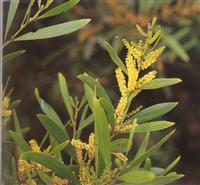
Learn about Wattles
Learn about the identification and botany, and culture (planting, watering, feeding, propagation)
of the wattles. Around 50 species are studied in detail. You also learn about the commercial uses of Acacias as building materials, food plants, for tanning, craft, etc.
Acacias have more uses than most people realize. The most obvious use is as a garden plant; or perhaps a timber. Acacias are also grown and harvested for a whole range of purposes.
-
Did you realize that Gum Arabic comes from Acacias?
-
Did you realize that some African tribes use Acacias as a major food source for livestock?
-
Do you realize, some Acacias are used to supply medicines?
-
Do you realize native peoples in Australia, Africa and other places eat seeds, flowers, gum and other things harvested from Acacias